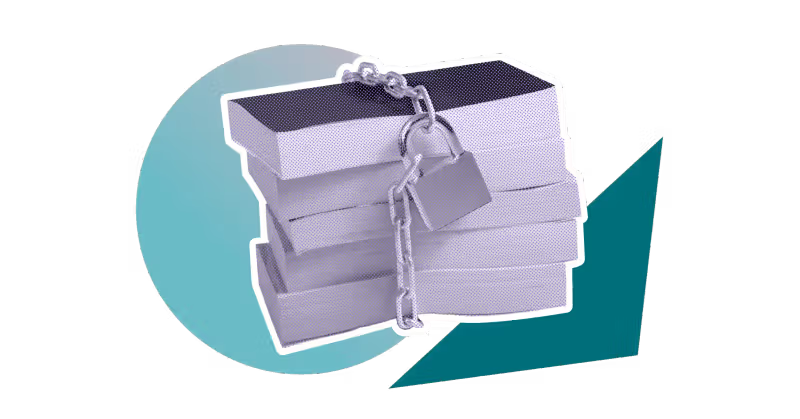What is a Single Source of Truth? The beginner's guide
Share on socials
What is a Single Source of Truth? The beginner's guide

Jump to Section
Jump to section
What is a Single Source of Truth (SSOT)?
Why a SSOT matters
Challenges in creating a SSOT
5 steps to achieving a SSOT
A Single Source of Truth keeps everyone on the same page and makes finding information easy. Here’s how to create one in your company.
To make strategic decisions, it's common sense that your business data should be up-to-date and standardised. One of the ways to ensure that data is managed well is to produce high-quality documentation. Need help in that area? Take a look at our best practices for documentation.
Once your documentation is up to scratch, it's time to focus on making the correct data accessible to everyone in the business. The best way to achieve this is by establishing a Single Source of Truth.
Once your documentation is up to scratch, it's time to focus on making the correct data accessible to everyone in the business. The best way to achieve this is by establishing a Single Source of Truth.
What is a Single Source of Truth?
A Single Source of Truth, or SSOT, is a concept that ensures everyone in an organisation accesses the same, up-to-date information. This information lives in a central place - like a database or knowledge base - that all employees can access.
To create a Single Source of Truth, you need one authoritative data source that provides one view of information across your organisation. That's one single trusted reference point for all employees.
What is 'Company knowledge'? This is the knowledge and expertise you get from your data. Making decisions based on data is always better than guesswork. The only problem is if your data is unreliable, it serves a limited purpose.
Why a Single Source of Truth matters
A Single Source of Truth ensures that employees can make decisions based on accurate, consistent data, helping teams to align on goals and achieve their objectives. It also helps team members self-serve to find information quickly, which improves productivity.
Without a Single Source of Truth, your organisation is at risk of cyber threats. Fragmented data can lead to security breaches, compliance issues, and data privacy compromises. Outdated and duplicate data can also slow efficiency and reduce productivity.
Having a Single Source of Truth has many benefits, from the obvious to the subtle:
- You achieve consistency, accuracy, and efficiency: If everyone accesses the same data, you enjoy more consistent and accurate decision-making. Only having one data source to search means employees can efficiently search the data for the answer they're looking for, saving time. (Looking for a convenient way to store your data? Learn how Confluence databases could help you.)
- An SSOT promotes collaboration: Working from the same dataset means you're sharing knowledge — you're finally on the same page. Communication is more effective, and problem-solving becomes easier.
- … And it inspires innovation: With nothing standing in the way of implementing an optimised data strategy, you're free to innovate.
What are the challenges of a Single Source of Truth?
A Single Source of Truth means eliminating information silos and providing access to data. But it's more challenging than you'd think. The modern digital landscape, for all its benefits, has made the task of establishing an SSOT more difficult.
We have more data access than ever before, but it's coming at us from all angles — from cloud applications and IoT (Internet of Things) devices to third-party systems. We're drowning in data sprawl, which inevitably leads to inconsistencies.
For workers depending on knowledge to do their jobs (researchers, analysts, tech developers), more commonly referred to as knowledge workers, it's now more important than ever to establish a reliable, synchronised, unified view of data.
Multiple disjointed systems are the troublemakers
Disjointed systems mean data fragmentation, that much is clear. And 86% of B2B companies believe they can do much better with data. But integrating and verifying your data manually is time-consuming, and you can't escape the inevitable human errors.
This begs the question: How do you unify your data so you can use it to its full potential? The answer is better data management frameworks.
How to 5 achieve a Single Source of Truth in 5 steps
Although creating a Single Source of Truth can be condensed into five steps, it's not a quick process. Take your time with each step to ensure you get it right.
- Analyse all data sources to understand which data is a priority, which is a duplicate, and which is outdated.
- Introduce a data management platform, such as Confluence, to aggregate and organise all data and remove data silos.
- Implement data visualisation tools to better understand the data you're looking at.
- Train staff to improve tech understanding and adoption so they know how to navigate your new data system.
- Re-build data governance policies to ensure your data remains accurate going forward.
To sum up
There's no doubt we're living in a data-centric world. Data drives every business decision, or at least it should. However, without accurate and centralised data, all business decisions are made blindly. Equipped with the right tech, you can unify your data to drive better-informed, agile business decisions while maximising operational efficiency.
Make Confluence work the way you want it to
However you want to extend Confluence, we've got the app to help you achieve it.
Related Content
Read moreWritten by

Content Writer
Helen is a freelance content writer specialising in Software as a Service (SaaS). She has a BA Hons degree in English, a Chartered Institute of Marketing qualification, and over ten years of experience in content marketing.
Related Content
Read more


